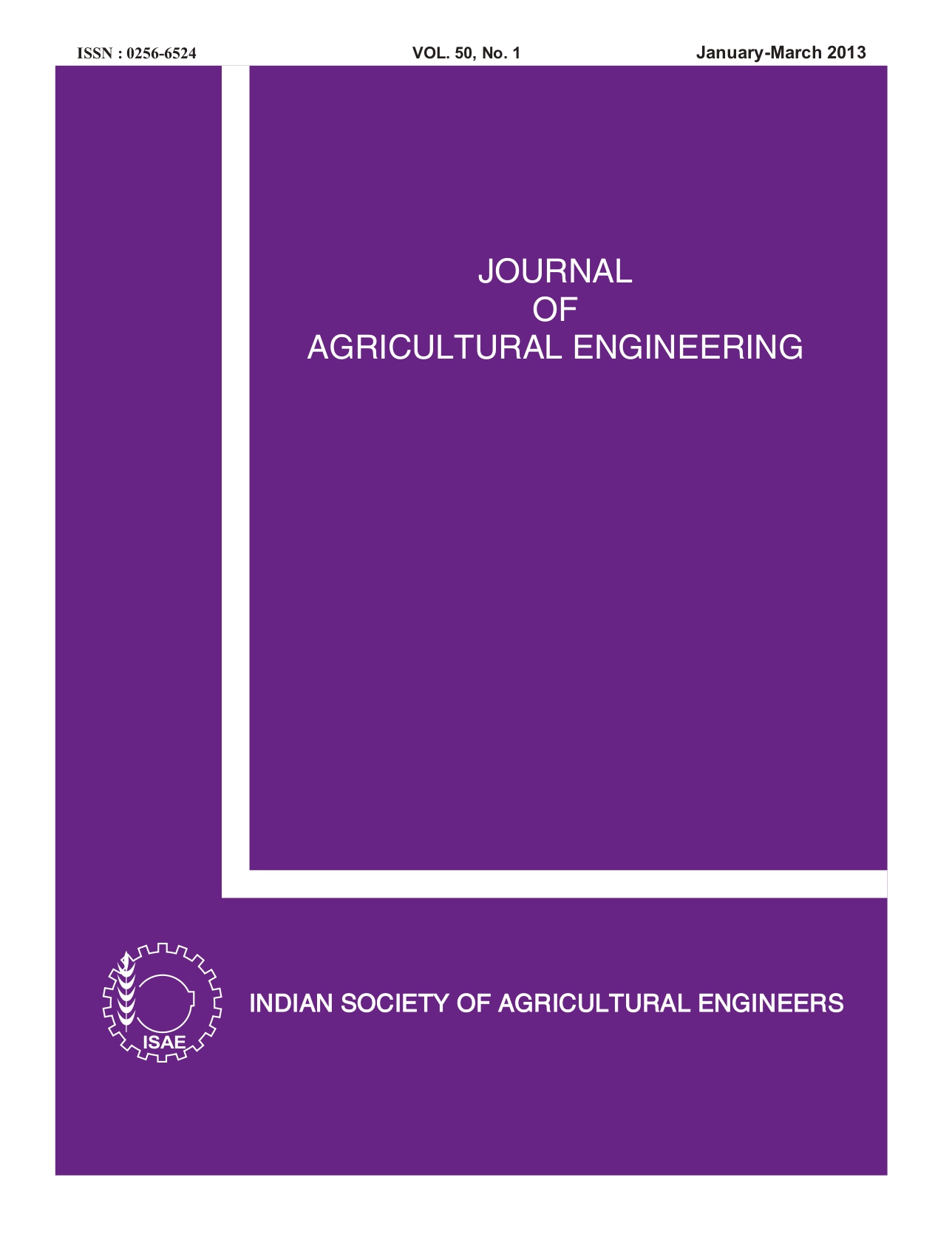Drying Characteristics of Rose Flowers
DOI:
https://doi.org/10.52151/jae2013501.1503Keywords:
Drying, drying characteristics, rose, microwave oven, vacuum, shade, solar, hot airAbstract
Full boom rose was dried by employing different drying methods such as hot air drying at 40, 50 and 60 0C, microwave oven drying with silica gel at 50 0C, vacuum drying at 40 0C and 760 mm Hg pressure besides solar and shade drying to find out the most suitable method and parameters. The Exponential and Page’s model were tested for their validity. Page’s model was found to fit best. The maximum and minimum drying time for rose flowers was 5 days in shade and 13 minutes in microwave oven. Drying of rose flowers under all treatments completely took place in the falling rate period. Maximum overall drying rate of 5.87 %/min was during microwave oven drying with silica gel at 50oC, followed by vacuum drying at 40oC. Microwave oven drying of rose flowers at 50oC with silica gel was found the best from the reduction in size point of view.
References
Anon. 1997. Dry flowers industry in India. Floriculture Today, 2(5), 3-16.
Anon. 2010. Indian horticulture database. Ministry of Agriculture, govt. of India, gurgaon, pp: 278.
AOAC. 1995. Official Methods of Analysis. Association of Official Analytical Chemists, Washington DC.
Bhutani J C; Kher M A. 1979. Dehydration of flowers and foliage. Extension Bulletin, NBRI, Lucknow, pp: 1-20.
Brooker D B; Bakker-Arkema F M; Hall C W. 1974. Drying cereals grains. The AVI Publishing Co. Inc.,
Connecticut, pp: 265.
Chen W; Gast K L B; Smithy S. 2000. The effect of different freeze drying processes on moisture content,
colour and physical strength of roses and carnation. Scientia Hort., 84 (3/4), 321-322.
Cheng H R; Jinchyau P; Hao C K; Xuan W Y; Junjia H. 2002. The effect of different drying methods on lotus
flowers drying characteristics and sensory evaluation. J. Agric. Forestry, 51(3), 67-81.
Geetha C K; Manoharan S; Rajeevan P K; Valasalakumari P K. 2003. Studies on the technology for dry flower production of gerbera (Gerbera jamesonii Bolus ex Hook.F). South Indian Hort., 51 (1-6), 347-349.
Kar A; Gupta D K. 2003. Air-drying of osmosed button mushrooms. J. Food Sci. Technol., 40(1), 23-27.
Pandya H A; Saxena O P; Nell T A; Clark D G. 2001. Preservation of chrysanthemum sp. by drying. Acta. Hort.,
, 367-369.
Paparozzi E T; McCallister D E. 1988. Glycerol and Microwave preservation of Annual Statice (Liminiumsinuatum Mill). Scientia Hort., 34, 293-299.
Prabhanjan D G; Ramaswamy H S; Raghavan G S V.2 1995. Microwave assisted convective air drying of thin lay carrots. J. Food Engg., 25, 283-294.
Rajeevan P K; Valsalakumari P K. 2004. Advances in value addition of flowers with special emphasis to oil
production. National Seminar on advances in value addition of horticultural crops. Navsari Agricultural University, Navsari.
Ranganna S. 2000. Handbook of analysis and quality control for fruits and vegetable products. Tata McGraw Hill Publishing Co. Ltd., New Delhi.
Simalemga T E; Hatibu N; Salokhe V M; Iiangantileke S G. 1990. Solar drying of agricultural products in Tanzania: prospects and constraints. Proceedings of International Agricultural Engineering Conference and Exhibition, Bangkok, Thailand, 3-6 Dec., pp: 517-522.
Singh B P N; Narain M; Srivastava R. 1986. Thin layerdrying of paddy. In: Drying of solids, Majumdar A.S. (ed.)
Willey Eastern Ltd., New Delhi, pp:103 -135.
Singh H P. 2000. Current status of floriculture in India. Floriculture Today, 5(4), 6-11.
Singhal V. 2003. Indian Agriculture. Indian Economic Data Research Centre, New Delhi, pp: 201.
Sohn K.; Kwon H J; Kim E Y. 2003. Optimum drying temperature to maintain size and colour of dried rose.
Korean J. Hort. Sci. Technol., 21(2), 141-145.














